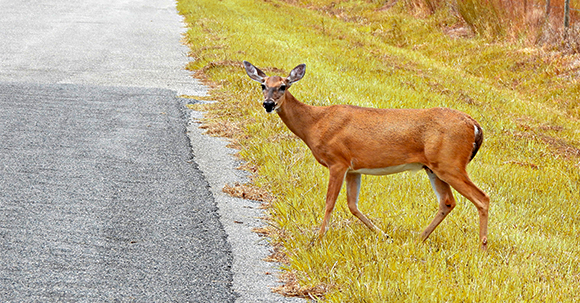Fall is here. The old flannel in your closet is calling your name, and the pumpkin spice lattes are a-flowing. But more importantly, deer are on the move. Because hunting and mating seasons collide, many deer find their way onto highways, into quiet neighborhoods and, sometimes, right in front of your car. It doesn’t help that South Dakotans have one of the highest risks of hitting an animal while driving. Here’s what to do if man and nature collide.
How to Deal with Hitting a Deer

BEFORE

Drive with Deer in Mind
They’re often most active at dawn and dusk.
WATCH FOR DEER CROSSING SIGNS
Signs are placed in areas with high activity.

Slowly Approach Hills and Turns
You can’t avoid what you can’t see.
Turn on Those Lights
You’ll have better visibility, and your headlights might frighten or help deter deer.

Scan Your Surroundings
It’s not enough to only look at the road. Make sure you’re scanning the sides of roads and ditches.
DURING

Brake and Honk Your Horn
If you have time to react, this may scare the deer out of the road.

Don’t Swerve
It might seem counter intuitive, but turning quickly could cause more damage than hitting the deer. Quickly swerving may cause you to hit oncoming traffic in the other lane or cause your vehicle to roll. Don’t turn a bad situation worse.
AFTER
So, you hit a deer. Don’t worry, it can happen to any driver. These instructions will help you navigate the aftermath.

Step 1
As soon as it’s safe, pull your car to the side of the road away from traffic.
Step 2
Call emergency services in case of injury, to remove the deer and file a report.
Step 3
Leave the deer alone. It could be dangerous to approach if it’s still alive.

Step 4
Document the incident. Take photographs if it’s safe to do so.
Step 5
Don’t assume your vehicle is okay to drive. Look for loose parts, flat tires etc.
Remember the best way to deal with deer is to prepare in advance. Taking preventive measures can significantly reduce the risk of colliding with deer while driving.